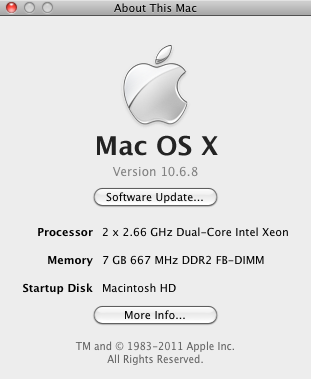Overrun (Tom) Mac OS
The parallels 12 of Mac have such great beauty as it helps to run the standard windowed Mac. It mainly uses the Mac OS X/macOS app rather than using the power of the window. Due to the high cost, some users flop their idea of having it, and some prefer to get it for playing on Mac. It is slightly expensive as compared to the Boot Camp and makes. Mac encrypting ransomware has been discovered packaged with a popular BitTorrent client, marking the first time any form of ransomware targeting Apple's OS X has appeared in the wild.
OS: Windows® 7 (SP1) / Windows® 8 / Windows® 8.1 / (64-bit only) Processor: 2.5 GHz Intel® Core™ i5-2400S or 4.0 GHz AMD FX-8350 or better Memory: 8 GB RAM Graphics: NVIDIA GeForce GTX 680 or AMD Radeon R9 290X or better (2 GB VRAM) DirectX: Version 11 Network: Broadband Internet connection Storage: 30 GB available space Sound Card. The history of macOS, Apple's current Mac operating system originally named Mac OS X until 2012 and then OS X until 2016, began with the company's project to replace its 'classic' Mac OS.That system, up to and including its final release Mac OS 9, was a direct descendant of the operating system Apple had used in its Macintosh computers since their introduction in 1984. Use Time Machine, the built-in backup feature of your Mac, to automatically back up your personal data, including apps, music, photos, email, and documents. Having a backup allows you to recover files that were deleted, or that were lost because the hard disk (or SSD) in your Mac needed to be erased or replaced.
| Initial release | August 1983; 37 years ago |
|---|---|
| Operating system | Unix and Unix-like |
| Type | Command |

ifconfig (short for interface config) is a system administration utility in Unix-like operating systems for network interface configuration.
The utility is a command-line interface tool and is also used in the system startup scripts of many operating systems. It has features for configuring, controlling, and querying TCP/IP network interface parameters. Ifconfig originally appeared in 4.2BSD as part of the BSD TCP/IP suite.
Usage[edit]

Common uses for ifconfig include setting the IP address and netmask of a network interface and disabling or enabling an interface.[1] At boot time, many Unix-like operating systems initialize their network interfaces with shell scripts that call ifconfig. As an interactive tool, system administrators routinely use the utility to display and analyze network interface parameters. The following two examples show the output of the tool when querying the state of a single active interface each on a Linux-based host (interface eth0) and the ural0 interface on an OpenBSD installation.
- HWaddr: hardware address, MAC address.
- The parameter txqueuelen is measured in number of Ethernet frames and is the size of the buffer that is being managed by the network scheduler.
Medium access control functions[edit]
ifconfig is also commonly used to change the medium access control (MAC) address of an interface. In this process, the network interface is first disabled (set down) with the ifconfig command, followed by a MAC change command:
Release status[edit]
The Berkeley Software DistributionUNIX operating systems (e.g., NetBSD, OpenBSD, and FreeBSD) continue active development of ifconfig and extension of its functionality to cover the configuration of wireless networking interfaces, VLAN trunking, controlling hardware features such as TSO or hardware checksumming or setting up bridge and tunnel interfaces. Solaris has historically used ifconfig for all network interface configuration, but as of Solaris 10 introduced dladm to perform for each interface.
Network Manager is a Linux daemon that automatically reconfigures the network in dynamic environments, such as moving between WiFi hotspots. It is usually used in conjunction with a graphical front-end such as GNOME Shell.
Versions of Microsoft Windows from Windows 95 to Windows Me used winipcfg to give a graphical display of current IP information. ipconfig, a command similar to ifconfig, comes with Microsoftoperating-systems based on the Windows NTkernel. ipconfig also controls the Windows DHCPclient.
Overrun (tom) Mac Os 11
In macOS, the ifconfig command functions as a wrapper to the IPConfiguration agent, and can control the BootP and DHCP clients from the command-line. Use of ifconfig to modify network settings in Mac OS X is discouraged, because ifconfig operates below the level of the system frameworks which help manage network configuration.
iwconfig, a component of Wireless tools for Linux, which took its name from ifconfig, manages wireless network interfaces outside the original scope of Linux's ifconfig. iwconfig sets such specialized settings as a wireless network's SSID and WEP keys, and functions in tandem with iwlist. Linux also features iwspy, to read the signal, noise and quality of a wireless connection.
Overrun (tom) Mac Os Catalina
Other related tools for configuring Ethernet adapters are: ethtool, mii-tool, and mii-diag in Linux and the command dladm show-link in Solaris.
See also[edit]
References[edit]
- ^'Interface Configuration for IP'. Linux Network Administrators Guide. 3 August 2008. Retrieved 28 March 2019.
- ^net-tools on SourceForge.net
- ^Gundersen, Tom (8 June 2011). 'News: Deprecation of net-tools'. Retrieved 28 March 2019.
- ^Jonathan Corbet (4 January 2017). 'Moving on from net-tools'. LWN.net. Retrieved 23 September 2019.
- ^Litvak, Michail (6 March 2019). 'ip(8) manual page'. Retrieved 28 March 2019.
External links[edit]
Mac Os Mojave
- ifconfig(8), official manpage for Linux net-tools ifconfig
- ifconfig(8), manpage for the FreeBSD ifconfig
- ifconfig(8), manpage for the Solaris ifconfig
- ipconfig documentation for Windows